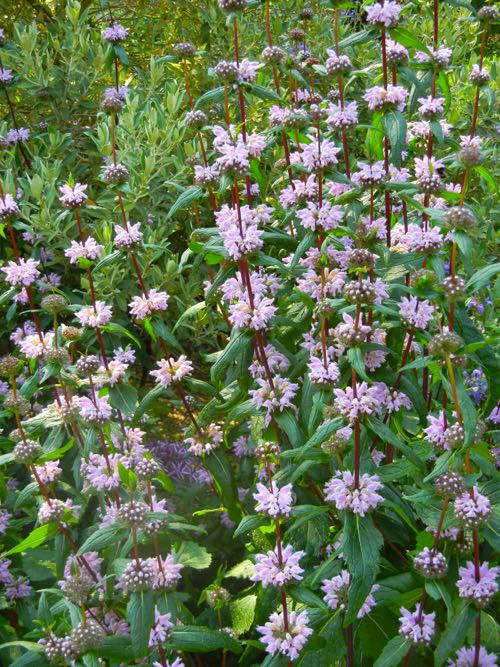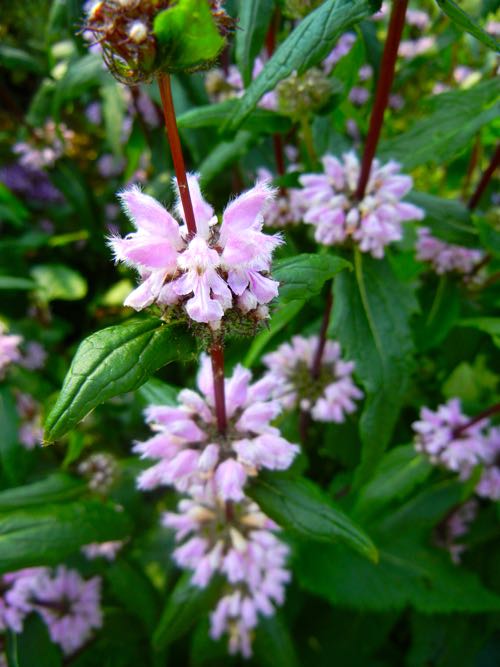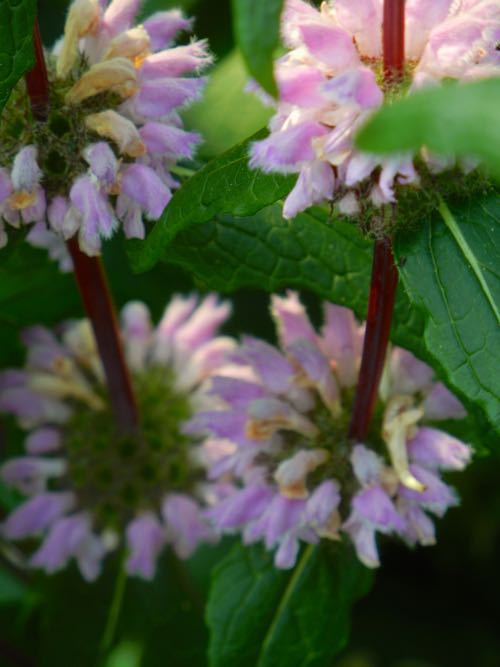Revel in the Splendor of Phlomis tuberosa ‘Amazone’ in Your Garden
Phlomis tuberosa ‘Amazone’ also known as Jerusalem Sage or Sage-leaf mullein ‘Amazone’ is an exceptional perennial that brings charm and resilience to your garden. Discover the captivating allure of this plant with its unique characteristics, native origins, and essential care guidelines.
Background: A Drought-Resistant Perennial
Phlomis tuberosa ‘Amazone’ belongs to the Lamiaceae family, renowned for its aromatic and ornamental plants. This particular variety is a hardy, drought-resistant perennial that thrives in dry soil and sunny locations. With its ability to withstand challenging growing conditions, it adds both beauty and resilience to any garden.
Characteristics: Mauve Blooms on Tall Spikes
Phlomis tuberosa ‘Amazone’ graces the summer garden with elegant mauve flowers borne on tall spikes. Reaching a height of about 1.2m or 4ft, this perennial commands attention with its vertical presence. The tubular and hooded lilac flowers form whorls around the striking dark purple stems, creating a captivating display. Complementing the blooms are pointed, dark green leaves, which add depth and texture to the overall appearance. Furthermore, the attractive seedheads add interest and charm even after the flowering season.
Description: Fragrant and Edible Delight
The flowers of Phlomis tuberosa ‘Amazone’ not only delight the eye but also please the senses with their delicate fragrance. Their enchanting scent acts as a beacon, attracting bees and butterflies, making it an excellent choice for pollinator-friendly gardens. Additionally, the plant holds culinary potential as its leaves can be used to make tea, offering a delightful and flavorful experience.
Origin and Native Habitat:
Phlomis tuberosa ‘Amazone’ originates from regions in Europe, particularly the Mediterranean. It is native to areas with dry and sunny climates, thriving in rocky slopes and well-drained soils. This natural habitat contributes to its adaptability to arid conditions, making it an ideal choice for water-wise gardening.
Cultivation of Phlomis tuberosa ‘Amazone’:
To successfully grow and maintain Phlomis tuberosa ‘Amazone’ in your garden, follow these guidelines:
Ideal Growing Conditions: Plant Phlomis tuberosa ‘Amazone’ in a sunny location where it can bask in full sunlight for most of the day. This perennial thrives in well-drained soil, so ensure that the soil is fertile, loose, and drains water effectively. If the soil in your garden tends to retain water, consider adding organic matter or compost to improve its drainage.
Planting and Propagation: Start by selecting a suitable spot in your garden with the right growing conditions. Dig a hole that is slightly larger than the root ball of the plant. Place the plant in the hole, making sure that the top of the root ball is level with the soil surface. Backfill the hole with soil, gently firming it around the roots.
Phlomis tuberosa ‘Amazone’ can also be propagated through division in early spring. Carefully dig up the plant and separate the root clumps, ensuring that each division has enough roots and shoots to establish itself. Replant the divisions in well-prepared soil, following the same planting instructions as mentioned above.
Watering: Once established, Phlomis tuberosa ‘Amazone’ is remarkably drought-tolerant. However, regular watering is necessary during the plant’s initial growth period and in prolonged dry spells. Water deeply and thoroughly, allowing the soil to dry slightly between waterings. Avoid overwatering, as excessive moisture can lead to root rot and other fungal diseases.
Pruning and Deadheading:
Phlomis tuberosa ‘Amazone’ benefits from regular pruning and deadheading to maintain its appearance and encourage new growth. After the flowering period, you can remove the spent flower spikes by cutting them back to a healthy set of leaves or stems. This will prevent the plant from self-seeding excessively and redirect its energy toward producing new blooms.
Fertilization: Phlomis tuberosa ‘Amazone’ generally doesn’t require heavy feeding. However, to promote healthy growth and flowering, you can apply a balanced, slow-release fertilizer in early spring. Follow the manufacturer’s instructions for application rates and methods. Alternatively, you can amend the soil with compost or well-rotted organic matter before planting to provide a nutrient-rich environment for the plant.
Pests and Diseases: Phlomis tuberosa ‘Amazone’ is relatively resistant to pests and diseases. However, keep an eye out for common garden pests like aphids and spider mites. If necessary, use organic insecticidal soap or neem oil to control infestations. Proper spacing between plants and good airflow can help prevent powdery mildew, a fungal disease that can affect Phlomis tuberosa ‘Amazone.’ If you notice any signs of disease, promptly remove and destroy affected plant parts to prevent further spread.
Winter Care: Phlomis tuberosa ‘Amazone’ is generally hardy and can withstand cold temperatures. In regions with harsh winters, a layer of mulch around the base of the plant can provide additional insulation and protect the roots from freezing. If the above-ground portion of the plant dies back in winter, simply cut it back to ground level and wait for new growth to emerge in the following spring.







